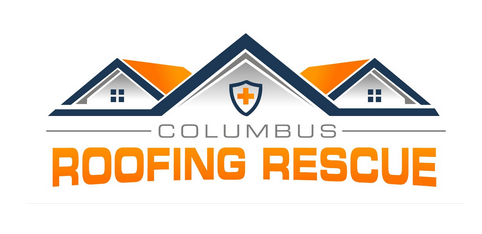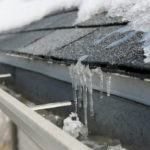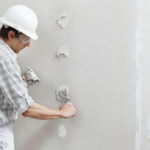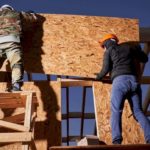
What Is A Living Roof & Green Roof?
As cities continue to expand and urbanization becomes more common, green roofing has become an increasingly popular option for sustainable building design. Green roofs are not only cool to look at and pleasing, but they also provide numerous environmental, economic, and social benefits. In this ultimate guide to green roofing, we will explore what green roofing is, the benefits of green roofing, the different types of green roofs, the vegetation options for green roofs, the components of a green roof, how green roofs work, the installation process, maintenance, cost and ROI, case studies, green roofs vs. traditional roofs, and regulations and incentives.
What is a Green Roof?
A green roof is also called a vegetated roof. It is partially or entirely covered with vegetation and growing media. Green roofs can range from simple rooftop gardens to complex systems that include layers of soil, drainage, and irrigation systems. Green roofs can be installed on various types of buildings, including commercial, residential, and industrial buildings, and can be designed in multiple shapes and sizes.
Benefits of Green Roofing
Green roofing provides numerous benefits, including environmental, economic, and social benefits.
Environmental Benefits

Green roofs can help mitigate the heat by reducing the amount of heat absorbed by houses, buildings, and surrounding surfaces. They also help reduce stormwater runoff by absorbing the rainwater and releasing it slowly back into the atmosphere. Additionally, green roofs can improve air quality by absorbing pollutants and producing oxygen.
Economic Benefits
Green roofs can help reduce energy consumption by providing insulation and reducing heat gain in the summer and heat loss in the winter. This can help lower energy bills and reduce demand on the power grid. Green roofs will also increase the lifespan of your roof by protecting it from UV rays, extreme temperatures, and weathering.
Social Benefits
Green roofs can provide additional outdoor space for residents, employees, and visitors to enjoy. They also enhance the aesthetic of buildings and cities, which can lead to increased property values and tourism.
Types of Green Roofs
There are only two main types of green roofs: extensive and intensive.
Extensive Green Roofs
Extensive green roofs are typically shallow, lightweight, and require minimal maintenance. They are usually less than 6 inches deep and are planted with drought-tolerant plants such as sedums, grasses, and wildflowers. Extensive green roofs are ideal for buildings with low structural capacity and are often installed on residential, commercial, and industrial buildings.
Intensive Green Roofs
Intensive green roofs are typically deeper, heavier, and require more maintenance than extensive green roofs. They can range from 6 inches to several feet deep and can support a variety of plants, including trees, shrubs, and vegetables. Intensive green roofs are ideal for buildings with higher structural capacity and are often installed on public buildings, parks, and residential buildings.
Vegetation Options for Green Roofs

The vegetation options for green roofs depend on the type of green roof, climate, and local availability.
Sedums
Sedums are a popular choice for extensive green roofs because they are drought-tolerant, low-maintenance, and can be planted in shallow soil. They come in multiple colors and require minimal irrigation and fertilization.
Grasses
Grasses are a popular choice for both extensive and intensive green roofs because they are hardy, adaptable, and provide a natural aesthetic. They can be planted in a variety of soils and climates and can help reduce soil erosion and stormwater runoff.
Wildflowers
Wildflowers are a popular choice for extensive green roofs because they are low-maintenance and attract pollinators such as bees and butterflies. They can also provide a burst of color and biodiversity to urban environments.
Trees and Shrubs
Trees and shrubs are popular for intensive green roofs because they provide shade, habitat, and aesthetic value. However, they require deeper soils and more maintenance than sedums, grasses, and wildflowers.
Components of a Green Roof
Green roofs typically have several layers, including a waterproof membrane, a root barrier, a drainage layer, growing media, and vegetation.
Waterproof Membrane
The waterproof membrane is the first layer of a green roof designed to prevent water from penetrating the roof structure. It is typically made of rubber, PVC, or modified bitumen.
Root Barrier
The root barrier prevents plant roots from penetrating the waterproof membrane and causing leaks. It is typically made from durable materials such as high-density polyethylene.
Drainage Layer
The drainage layer is designed to allow excess water to drain away from the growing media and prevent water from accumulating on the roof. It is normally made of a lightweight material such as gravel, expanded clay, or plastic.
Growing Media
The growing media is the soil-like material that supports the vegetation on the green roof. It typically comprises lightweight aggregates, such as expanded clay or shale, and organic matter, such as compost or peat moss.
Vegetation
The vegetation is the final layer of a green roof and is the plants that grow on the growing media. It can be a variety of plants, including sedums, grasses, wildflowers, trees, and shrubs.
How Does a Green Roof Work?
Green roofs provide a layer of vegetation that absorbs rainwater, reduces heat gain, and provides insulation. The vegetation on the green roof also absorbs carbon dioxide and other pollutants, which helps reduce air pollution. The green roof’s growing media and drainage layer also help reduce stormwater runoff by absorbing rainwater and releasing it slowly into the atmosphere.
Green Roofing Installation Process
The installation process for green roofing typically involves several steps, including site assessment, design, waterproofing, insulation, drainage, growing media, vegetation, and maintenance.
Site Assessment
The very first step in the roof installation process is a site assessment to determine if the building is suitable for a green roof. Factors to consider include the structural capacity of the building, access to the roof, and the local climate.
Roof Design
The design of the green roof depends on several factors, including the type of green roof, the vegetation options, and the local climate. A professional green roofing contractor can help design a green roof that meets the specific needs of the building.
Waterproofing
The waterproofing layer is the first layer installed on the roof and is designed to prevent water from penetrating the roof structure. It is typically made of rubber, PVC, or modified bitumen.
Roof Insulation
The insulation layer is designed to provide thermal resistance and reduce energy consumption. It is typically made of a rigid insulation board or spray foam.
Drainage
The drainage layer is designed to allow excess water to drain away from the growing media and prevent water from accumulating on the roof. It is usually made of a lightweight material such as gravel, expanded clay, or plastic.
Growing Media
The growing media is the soil-like material that supports the vegetation on the green roof. It typically comprises lightweight aggregates, such as expanded clay or shale, and organic matter, such as compost or peat moss.
Vegetation
The vegetation is the final layer of a green roof and is the plants that grow on the growing media. It can be a variety of plants, including sedums, grasses, wildflowers, trees, and shrubs.
Maintenance
Green roofs require regular maintenance to ensure their longevity and effectiveness. Maintenance tasks include watering, fertilizing, weeding, and monitoring for pests and diseases.
Green Roofing Maintenance

Green roofs require regular maintenance to ensure their longevity and effectiveness.
Watering
Watering is essential to green roof maintenance, especially during the first few months after installation. The amount of water used depends on the climate, vegetation, and growing media.
Fertilizing
Fertilizing is necessary to provide essential nutrients to the vegetation on the green roof. Organic fertilizers are recommended to avoid runoff and to promote biodiversity.
Weeding
Weeding is necessary to prevent invasive species from taking over the green roof and promote desirable vegetation growth. Hand weeding is recommended to avoid damaging the growing media and vegetation.
Monitoring for Pests and Diseases
Monitoring for pests and diseases is essential to prevent damage to the green roof and maintain its effectiveness. Integrated pest management techniques, such as biological control and cultural control, are recommended to avoid harmful pesticides.
Green Roofing Cost and ROI
The cost of green roofing varies depending on several factors, including the type of green roof, the size of your roof, and the vegetation options. The ROI of green roofing depends on several factors, including energy savings, the lifespan of the roof, and the property value.
Green Roof Cost
The cost of green roofing can range from $10 to $25 per square foot for extensive green roofs and $25 to $50 per square foot for intensive green roofs. The cost includes materials, labor, and maintenance.
Green Roof ROI
The ROI of green roofing depends on several factors, including energy savings, the lifespan of the roof, and the property value. Studies have also shown that green roofs will reduce energy consumption by up to 30%, increase the overall lifespan of the roof by up to 50%, and increase property values by up to 15%.
Green Roofing Case Studies
Green roofing has been implemented around the world, and several case studies have shown the effectiveness of green roofing.
Chicago City Hall
Chicago City Hall installed a green roof in 2001, which has reduced energy consumption, reduced stormwater runoff, and provided additional outdoor space for employees and visitors.
California Academy of Sciences
The California Academy of Sciences installed a green roof in 2008, which has reduced energy consumption, reduced stormwater runoff, and provided habitat for local wildlife.
The Bosco Verticale
The Bosco Verticale in Milan, Italy, is two residential towers that feature over 900 trees and 20,000 plants on the balconies and roofs. The Bosco Verticale has provided habitat for local wildlife, reduced air pollution, and provided additional outdoor space for residents.
Green Roofs vs. Traditional Roofs

Green roofs offer several advantages over traditional roofs, including energy savings, reduced stormwater runoff, and increased lifespan.
Energy Savings
Green roofs can reduce energy consumption by providing insulation and reducing heat gain in the summer and heat loss in the winter. This can help lower energy bills and reduce demand on the power grid.
Reduced Stormwater Runoff
Green roofs can reduce stormwater runoff by absorbing rain and releasing it slowly back into the earth’s atmosphere. This can help reduce the strain on local stormwater systems and prevent flooding.
Increased Lifespan
Green roofs can increase the lifespan of the roof by protecting it from UV rays, high temperatures, and weathering. This will result in lower maintenance costs and reduced waste.
Green Roofing Regulations and Incentives
Local and national governments and organizations often incentivize green roofing.
Regulations
Several cities and municipalities have implemented green roofing regulations, including Toronto, Portland, and New York City. These regulations require new buildings to include green roofs or provide incentives for existing buildings to install green roofs.
Incentives
Several organizations provide incentives for green roofing, including tax credits, grants, and rebates. These incentives can help offset the cost of green roofing and make it more accessible to building owners.
Conclusion
Green roofing is more than just a trend; it is a sustainable building design solution that provides numerous environmental, economic, and social benefits. Green roofs are a valuable addition to any building, from reducing energy consumption and stormwater runoff to providing additional outdoor space and habitat for local wildlife. By understanding the different types of green roofs, vegetation options, components, and the installation and maintenance process, building owners can make informed decisions about green roofing and contribute to a more sustainable future.



